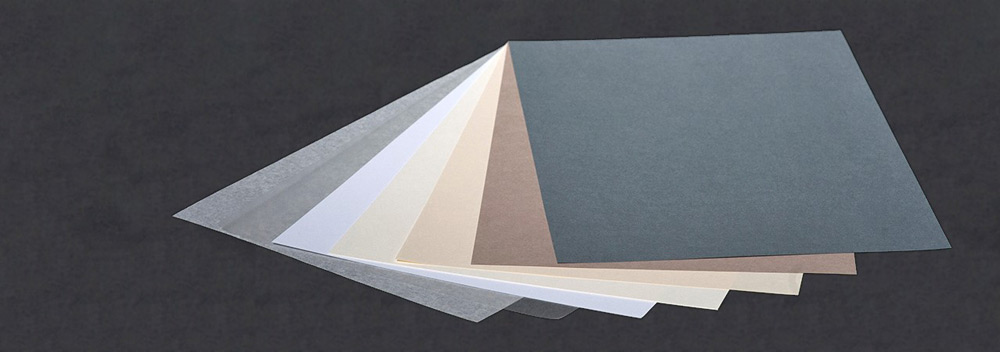Paper

Ts’ai Lun is given credit for the invention of paper around 105 A.D. However, there was evidence found in China pointing to the existence of paper nearly 300 years earlier. But what we can say with certainty is that paper is the oldest cultural medium. And even in today´s modern digital world, the global consumption of paper is increasing annually. Paper is the key component of all KLUG-CONSERVATION products.
Archival paper
Paper that is suitable for long-term archiving of valuable objects is generally referred to as archival paper. Particular attention should be paid to fulfilment of EN ISO 9706 when purchasing archival paper. Papers conforming to this standard are ageing resistant for an unlimited period of time.» to the product group
Museum paper
Museum paper is characterised by raw materials of the highest purity and utilisation of fresh fibres and natural carbonate. Ageing-resistant museum papers are suitable for permanent storage of valuable objects. Museum papers are available in various colours and grammages.» to the product group
Photographic archival paper
Photographic archival paper is normally an unbuffered, ageing-resistant paper that can be relied upon not to cause any damage particularly in direct contact.» to the product group
Japanese paper
Traditionally, Japanese paper is hand-made paper produced from low-growing plants. The term “washi” used for Japanese paper in general describes all papers made in this country. Today, the term Japanese paper implies thin, slightly transparent paper, hand-made as well as produced mechanically.» to the product group
Silk tissue paper
Silk tissue paper is a soft, flexible low-weight paper. It is often slightly transparent because of its low weight. Ageing-resistant silk tissue paper is made using pure fresh cellulose fibres, with or without carbonate buffer. Silk tissue paper is used to wrap sensitive objects and as filling or interleaving material.» to the product group
Glassine paper transparent
Long and gentle grinding of high-quality fibres produces a raw material from which transparent or semi-transparent papers can be made. The transparency effect can be enhanced by calender glazing (glazing between high-gloss rollers). Transparent papers are very sensitive to moisture. Ageing-resistant, transparent papers by KLUG-CONSERVATION are particularly popular for use as interleaving paper and for archiving photos and negatives.» to the product group
Blotting paper
Blotting paper is an atural white coloured, unglued, unbuffered, minimally pressed paper, the structure of which allows efficient absorption of liquids well through capillary action. The paper contains a considerable proportion of cotton fibres, since these are particularly absorbent.» to the product group
Novo test paper
The need for a new lignin-free test paper has come about due to further development of ISO/TS 18344 and DIN 32701 "Effectiveness of paper deacidification processes" norms. In conjunction with partners, KLUG-CONSERVATION is currently developing a NOVO test paper that fulfils the requirements of both the ISO/TS 18344 and DIN 32701 norms.» to the product group








